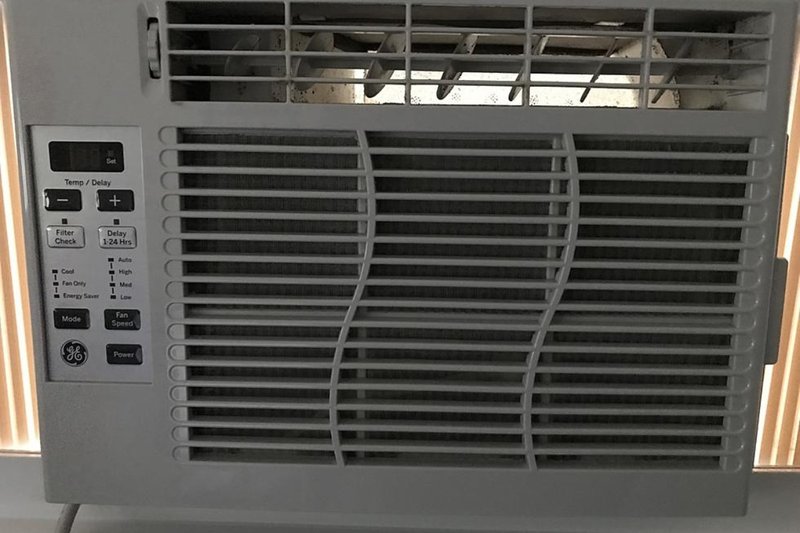
Understanding what E1 means is crucial. In simple terms, it’s often related to the air filter or the temperature sensor. You see, these parts play a big role in how well your air conditioner functions. If they aren’t working properly, the air conditioner can’t do its job, which ultimately impacts your comfort. So, when you spot an E1 code, it’s a prompt to check things out before the issue escalates.
What Does the E1 Error Code Mean?
So, what exactly is this E1 error code? Well, in the simplest terms, it’s a message from your GE air conditioner alerting you that there’s a problem with the air filter or the temperature sensor. Think of your air filter as the lungs of the air conditioner. If it’s clogged or dirty, it can’t breathe effectively, which means it can’t cool your space efficiently either. Likewise, the temperature sensor acts like your air conditioner’s thermometer, keeping track of the room temperature.
When an E1 error pops up, your air conditioner is essentially trying to tell you that there’s something off with these components. It could be that your air filter needs cleaning or replacing, or that the temperature sensor isn’t able to accurately read the room conditions. This might not seem urgent at first glance, but addressing these components is essential to maintaining your air conditioner’s performance and longevity.
Ignoring this error code might lead to reduced efficiency. Your air conditioner may work harder to achieve the desired temperature, consuming more energy in the process. This not only racks up your electric bill but could also strain the machine—a bit like trying to drive your car with the handbrake on. So, while the E1 error code might not spell doom for your air conditioner, it’s not something to be ignored.
Steps to Resolve the E1 Error Code
Dealing with an E1 error might sound daunting, but it’s actually quite straightforward. The first step is to check your air conditioner’s filter. Is it looking dusty or clogged? If so, it’s time to give it a good cleaning or replace it altogether. It’s a bit like cleaning the lint trap in your dryer—keeps things running smoothly and prevents bigger issues down the line.
Once you’ve dealt with the filter, you might want to inspect the temperature sensor. This small component is usually located near the evaporator coil. Make sure it’s properly seated and not damaged. If you’re unsure how to do this, consulting your air conditioner’s user manual or contacting a professional might be the best course of action.
After you’ve checked or addressed these components, turn the air conditioner back on and see if the E1 error persists. If the error is gone, congratulations! You’ve successfully tackled the problem. If not, there might be a deeper issue at play, such as an internal fault. In such cases, reaching out to a certified technician is wise. They can diagnose the problem more accurately and prevent future headaches.
Consequences of Ignoring the E1 Error Code
You might be tempted to ignore the E1 error code, especially if your air conditioner seems to be cooling adequately. However, it’s worth considering the potential consequences. Over time, ignoring error codes can lead to decreased efficiency and increased wear and tear on your unit. It’s like ignoring a leaky faucet; a few drips might not seem like much, but over time, you’re wasting water and potentially causing more damage.
Not addressing an E1 error code can lead to higher energy consumption. Your air conditioner may need to work harder to cool the room, leading to higher electricity bills. Moreover, persistent problems with the filter or sensor can reduce the lifespan of your air conditioner, potentially resulting in costly repairs or the need for a new unit altogether.
Ultimately, taking the time to address the E1 error code can save you from these unwanted outcomes. Simple maintenance tasks like regularly cleaning the air filter and checking the sensor can go a long way in keeping your air conditioner running smoothly. In the end, it’s not just about comfort; it’s about ensuring the longevity and efficiency of your appliance.
Preventative Tips to Avoid the E1 Error Code
Preventing an E1 error code from cropping up in the first place is always better than dealing with it after the fact. Regular maintenance is key here. Just like you wouldn’t skip yearly check-ups with your doctor, your air conditioner needs some TLC too! Start by making it a habit to check and clean the air filters every month. This will ensure that your air conditioner is always getting the airflow it needs to function efficiently.
In addition to tending to the filters, keep an eye on the overall cleanliness of your unit. Dust and debris can easily gather around your air conditioner, affecting its performance. Giving it a gentle wipe-down now and then can prevent potential issues. It’s also wise to schedule a professional maintenance check at least once a year. This way, a technician can spot any potential problems and stop them before they start.
Finally, if you notice any unusual behavior or performance issues with your air conditioner, address them promptly instead of waiting for an error code to appear. Taking these preventative measures will not only keep the E1 error at bay but will also ensure that your air conditioner serves you well for many seasons to come. After all, a little effort goes a long way in ensuring you stay cool and comfortable all summer long.